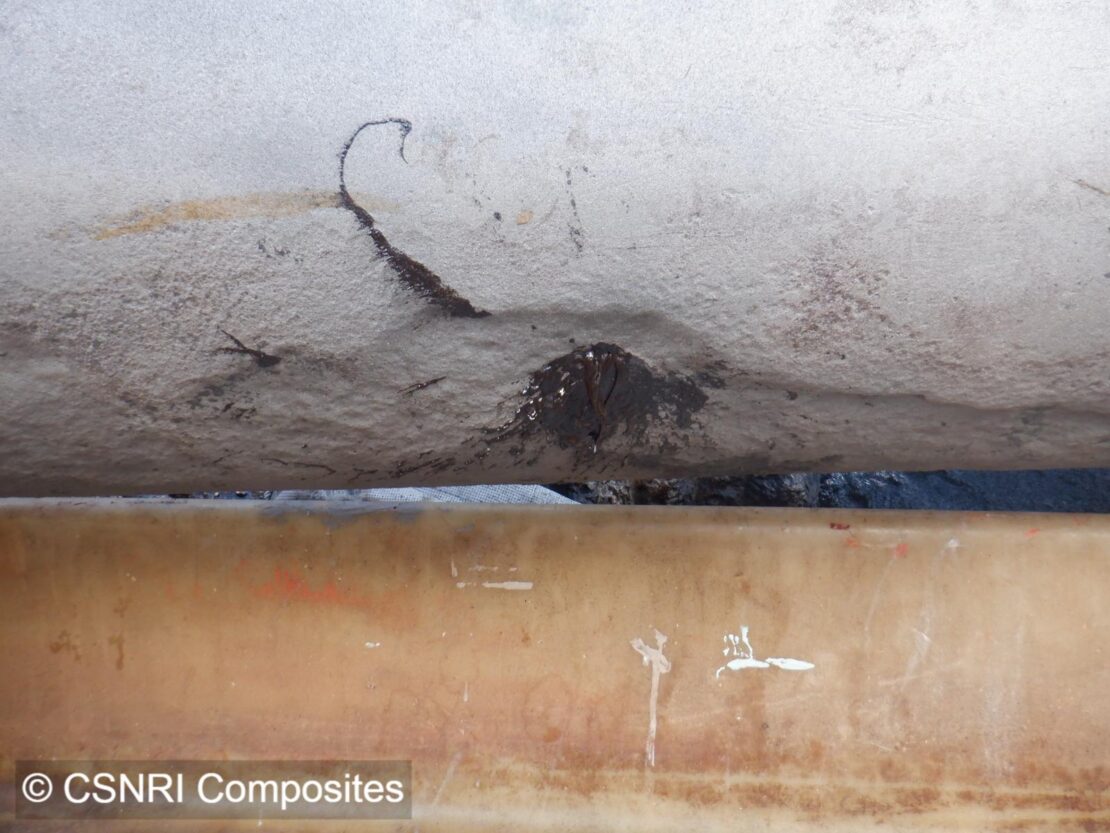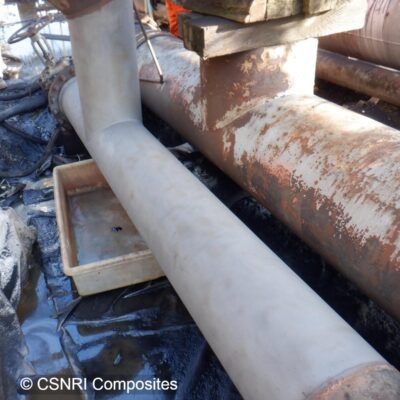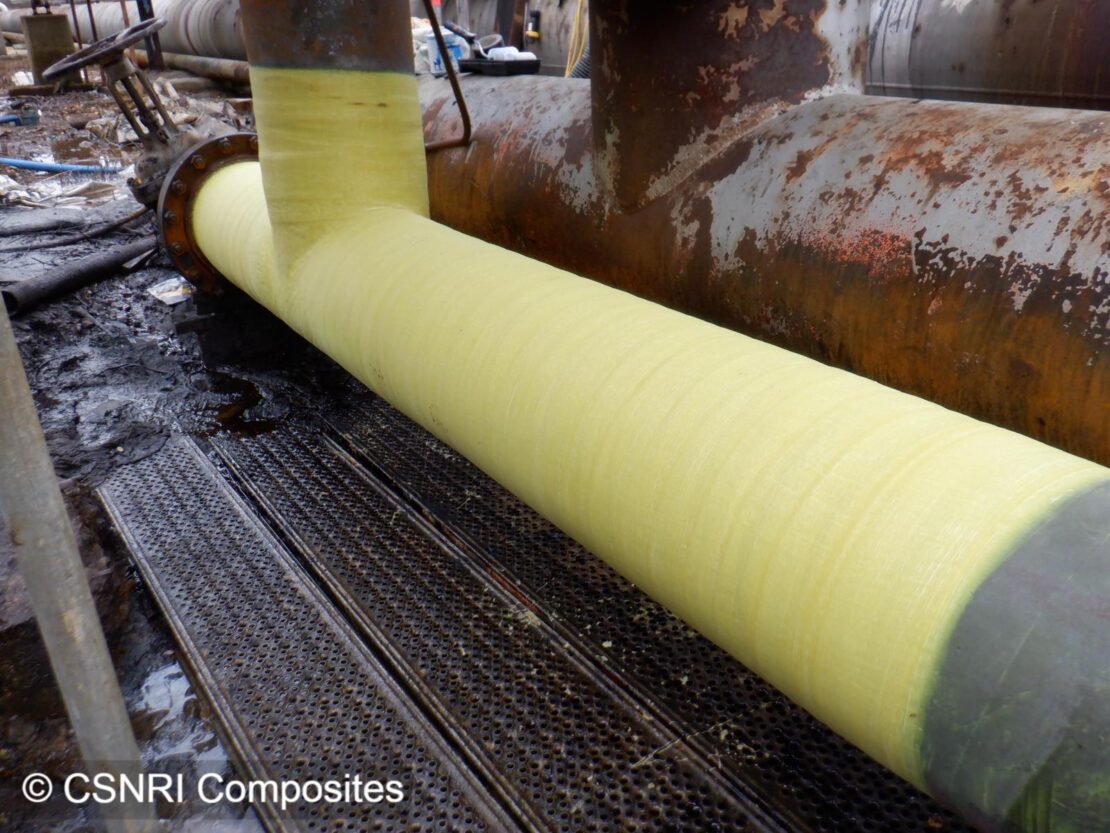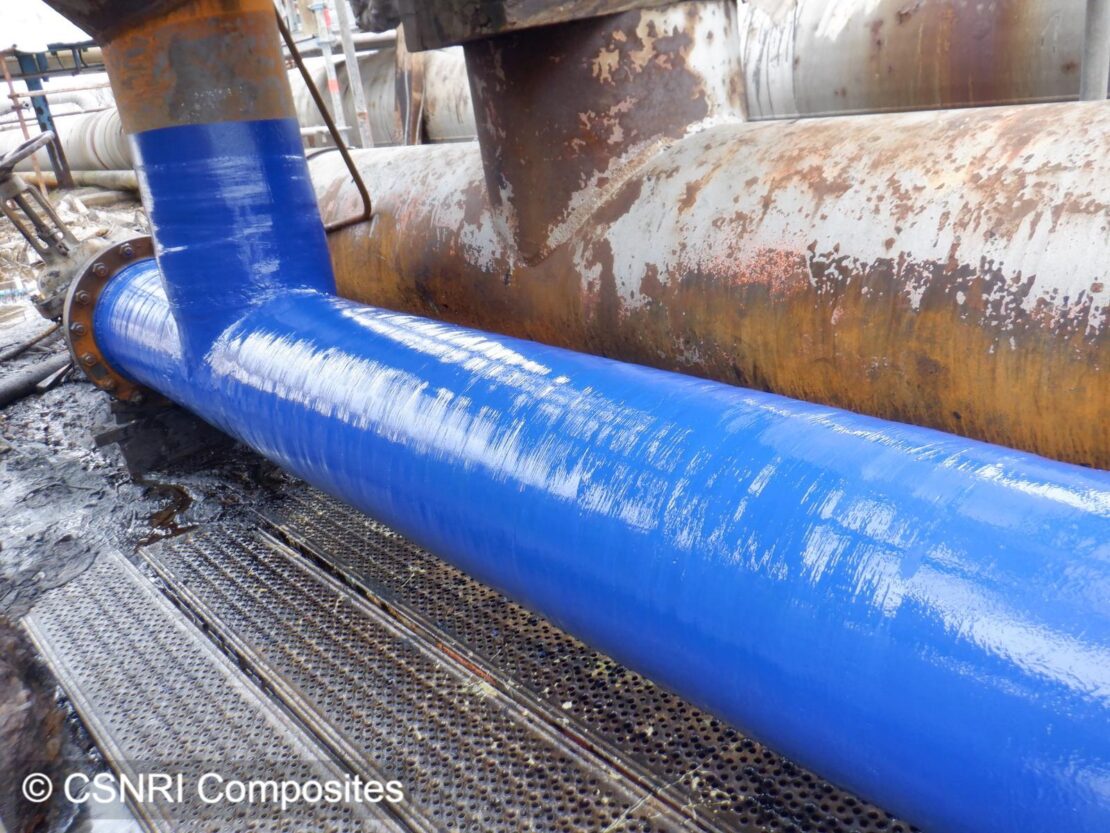UK
Summary
At a large refinery in the UK, a 16” carbon steel crude transfer line had suffered external corrosion, including a through-wall defect. This is a crucial transfer line at a high-volume facility that is used to discharge tankers berthed at the jetty, transferring crude to the refinery for processing. The line was sited in a pipe track that frequently experienced localized flooding. As to be expected, after many years of flooding, corrosion had compromised the line. At the request of the refinery owner, CSNRI engineers surveyed the damage and recommended a six-layer application of ThermoWrap® MT to repair the defect, mitigate the corrosion, and restore the full function and structural integrity of the line.
Benefits
- Extends the life of aging and corroded assets
- Seals leaks
- Restores pipe strength
- Prevents future external corrosion
- Designed for high-temperature, high-pressure environments
- Eliminates unplanned down time for high-consequence assets
- Easy installation and rapid curing
- No pipe cutting or welding
- Minimal creep
- No VOCs
Challenge
In addition to a through-wall defect, the corroded area involved complex, T-shaped geometry. The corrosion extended 1.8M from the flange to a support point, which would require removal to facilitate repair. Furthermore, to expedite immediate repair and prevent any interruption to the operation of the pipeline, it was necessary to execute the repair mid-winter in an area where cold temperatures, frequent rainfall, and strong winds can impede repair efforts. The facility owner had a long-standing relationship with CSNRI, and to facilitate a quick repair, made a request for a design solution.
Solution
The CSNRI team designed a repair incorporating ThermoWrap MT, according to ISO 24817, with a 20-year design life. ThermoWrap MT is used globally in plants, refineries, tank farms, terminals and on offshore assets as a pressure-containing repair to seal leaks, and as a reinforcing repair to restore the strength of a pipe in the axial and circumferential directions. It is ideal for repairs involving complicated geometry, including tees, flanges and varying diameter pipe.

The engineered field-saturated composite repair system uses a proprietary high-modulus fiberglass architecture in conjunction with a patented two-part epoxy system. The thick, non-crimped, glass fiber architecture and nano-tube-enriched resin combine to yield high-strength characteristics. Temperature and chemical resistance, along with the ability to conform to the complex geometry of the corroded T-junction area of the pipe, made ThermoWrap MT an exceptional choice for this challenging repair.
Application
The line was prepared by grit-blasting the surface to the required profile. The through-wall defect was repaired with EPN331 epoxy. An EPN331 epoxy repair system was also used in areas with corrosion pitting to restore pipe geometry. Next, six layers of ThermoWrap MT were applied over the 1731.4 mm linear repair on the base pipe, with a 225 mm linear repair on the branch (T) of the pipe. The application was made using a spiral-wrap technique.
The spiral wrap technique is used primarily for long repair zones on small- to medium-sized pipes. This technique involves wrapping the pipe at an angle configuring the wrap to overlap, typically by 50% of the fabric width. When using the spiral wrapping technique, two layers are applied from one edge to the other before reversing direction.
The repair was then encapsulated in one layer of peel ply and six layers of compression film and, with the assistance of heat blankets, allowed to cure to a shore D hardness value of at least 76. After curing, the repair was finished with UV stable coating to add further protection from exterior exposure.
Results
ThermoWrap MT is engineered to repair through-wall defects and installs easily
in challenging environments where there is complicated pipe architecture. Four technicians were able to complete the repair of the T-configured pipe area over the course of three days. The pipeline repair was completed, restoring the original pipe geometry and strength, with no interruption to operations during the repair.




